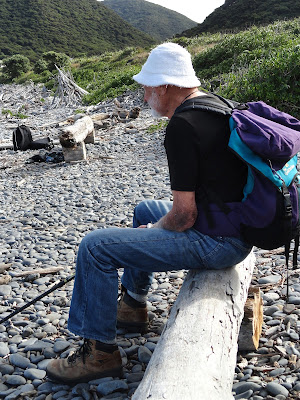My weekly bike trips along the coastal highway for the 10 miles to get to the train station has several memorial crosses along the road from fatalities in the last decade. Several more deaths have taken place along this stretch but are more recent and without memorials yet. So these reminders help keep me focused and alert as ride my bike to and from the train. One night I got back too late on the train, had thought I had my headlamp in my backpack but found it had been taken out, so I finished that ride pedaling in the dark part way home, in part thanks to the recent day light savings time change that suddenly shifted the sunset an hour earlier.

I took time on a past weekend to bike the 10 miles up into the river gorge so I could hike around, take some pictures and meditate while fishing. On my way bake at the end of the afternoon I had too much speed when I approached a section of the dirt road where a small river crosses the road and you have to have a bit of speed to throw the water away to each side as the front wheel hits the stream, but when exiting I then had to immediately start biking uphill on a sharp bank but the sped hit these corrugations and bounced me into the ditch and down I went on my forearm. So for the past week I was tending to the road rash on my arm so it would not get infected. I had good leather gloves on so my right hand was spared the same kind of skin grating that my forearm sustained. The bike continues to work well.
The post below is an old boundary marker that I passed on my way into the upper Otaki river pools.
This water is very clear and very cold, too cold for me to feel like trying to swim in it, even though there was lots of sunshine and very little wind. My legs went numb with the pain from the cold after a few minutes of wading. While fishing and exploring the river bank areas I was bitten a few dozen times by the sand flies which are very much like NH blackflies. Initially I thought they were harmless enough but still squashed a few dozen in the course of the afternoon. That night was no problem but the next couple of nights sleep was a challenge as the bites would itch intensely through the night. Fortunately I discovered that if I showered just before bed with very hot water on the bite areas then the itching would be intense at the time of the hot water exposure but then would subside shortly after and I could sleep with out the intense itching through the night.
This modern swing bridge is very well designed and constructed, making it very reliable for crossings.
The beekeepers put the hives up for their wintering stage in the orchard last week. here they are preparing some smokers so they can change up the hives.




















































































